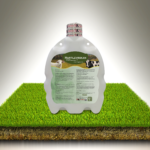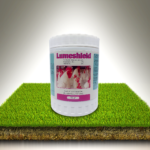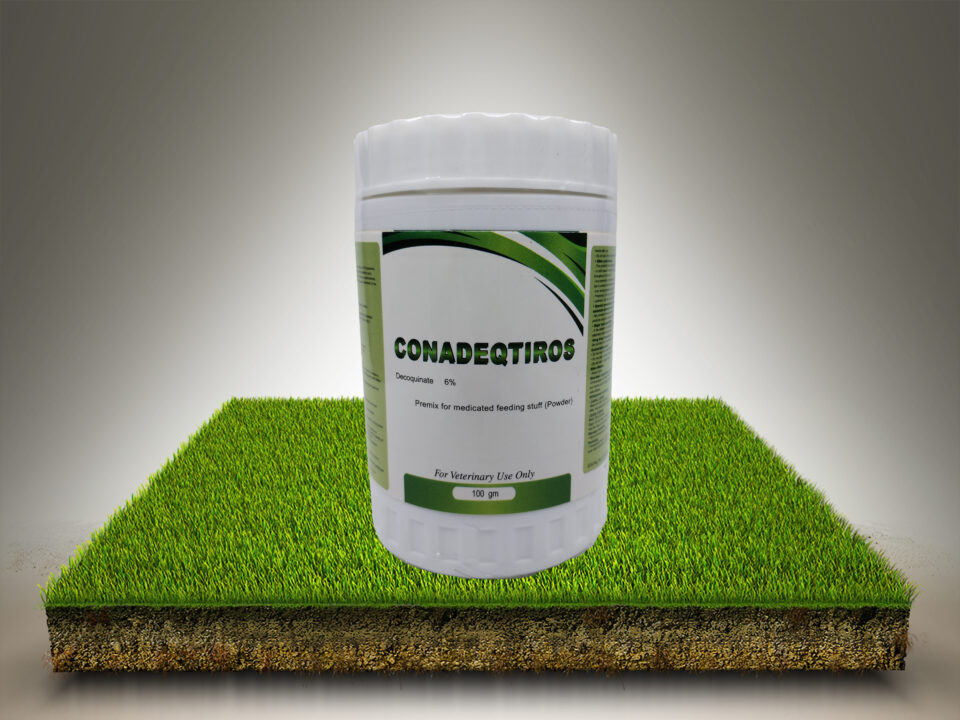
Martilevrokan

Lumeshield
Paratrinty
Composition:
Each 100 ml contains:
Oxfendazole 2.5 gm
Closantel 5 gm
Properties:
Paratrinty is combined of Oxfendazole& Closantel. Oxfendazole may concentrate preferentially in intestinal cells of parasites to exert its toxic effects principally at this site. Similar effects do not occur in host cells, possibly because of differential binding characteristics. The disruption of parasite metabolic processes and the effects of oxfendazole on enzymes of helminthes parasites involves inhibition of glucose and sodium uptake, reduced muscle glycogen content, uncoupling of oxidative phosphorylation and inhibition of malate dehydrogenase and fumarate reductase . Oxfendazole is a sulphoxide identical to the sulphoxide metabolite of fenbendazole, both are known to be anthelmintically active and metabolically interconvertible. Reduction of oxfendazole to fenbendazole occurs in the ruminal fluid while oxidation of fenbendazole to oxfendazole is carried out by hepatic microsomal enzymes in the liver. Much of fenbendazole’s anthelmintic activity is attributed to oxfendazole, the latter being much more potent. Oxfendazole has been shown to be effective against gastrointestinal roundworms, lungworms and tapeworms, including inhibited/arrested larvae of Haemonchus and Ostertagia spp. Closantel is a member of the salicylanilide class of anthelmintics. Salicylanilides are hydrogen (proton) ionophores (referred to as oxidative phosphorylase uncouplers). The chemical structure of salicylanilides illustrate the possession of a detachable proton. Closantel is effective against late immature and adult F. hepatica, O. ovis and immature and adult H. contortus, including benzimidazole resistant strains.
Indications:
It is used for treatment of mixed infections including:
*Gastrointestinal roundworms:
– Ostertagia spp (adult, arrested and inhibited larvae)
– Haemonchus contortus (adult, arrested and inhibited larvae)
– Nematodirus spp (including N. battus) (adult and immature)
– Cooperia spp (adult and immature)
– Trichostrongylus spp (adult and immature)
– Oesophagostomum spp (adult and immature)
– Chabertia spp (adult and immature
*Lungworms: Dictyocaulus filaria (adult)
*Tapeworms: Moniezia spp
*Sheep nasal fly: Oestrus ovis (larvae)
*Flukes: Chronic and sub-acute fasciolosis due to Fasciola hepatica (mature and late immature flukes).
Target Species:
Sheep.
Dosage & Route of administration:
Route: Oral administration - The suspension must be thoroughly shaken before administration. - drenching equipment must be used. Whole product: 1 ml of prduct/5 kg b.wt. by single oral administration. -Repeat after 21 days.
Warnings:
*Special warnings for each target species:
Care should be taken to avoid the following practices because they increase the risk of development of resistance and could ultimately result in ineffective therapy:
– Too frequent and repeated use of anthelmintics from the same class over an extended period of time
– Underdosing which may be due to under-estimation of bodyweight, mis-administration of the product, or lack of calibration of the dosing device.
– Suspected clinical cases of resistance to anthelmintics should be further investigated using appropriate
tests (e.g. faecal egg count reduction test). Where the results of the tests strongly suggest resistance to
a particular anthelmintic, an anthelmintic belonging to another pharmacological class and having a
different mode of action should be used.
Special precautions for use in animals:
– To be administered by the oral route only.
– Do not exceed the recommended dose.
– The bodyweight should be assessed as accurately as possible before calculating the dosage.As with
any husbandry procedure, care should be taken when handling the animals especially when inserting
the dosing gun nozzle into the animal’s mouth. Unnecessary force should not be used as this may
cause damage to the mouth and pharyngeal region.
*Special precautions to be taken by the person administering the veterinary medicinal product to animals:
– Direct contact with the skin should be kept to a minimum.
– Do not eat, drink or smoke while handling the product.
– Suitable protective clothing, including impervious rubber gloves should be worn.
– In case of accidental ingestion, consult your doctor immediately. In humans, temporary blindness,
nausea and vomiting may occur.
– Wash hands after use
*Special precautions for the disposal of unused veterinary medicinal products or waste materials:
– Dangerous to fish and aquatic life.
– Any unused veterinary medicinal product or waste material derived from such veterinary medicinal
product should be disposed of in accordance with national requirements.
Contra-indications:
- Do not use in animals with hypersensitivity to the active ingrediants.
- Do not use in cases where infections with benzimadazole resistant species are suspected. In this case an appropriate narrow spectrum product should be used.
- The use of this product is contraindicated in cases of known hyper sensitivity to other benzimadazoles.
- Do not use during pregnancy and lactation.
Side Effects :
- Oxfendazole has been shown to have an embryotoxic and teratogenic effect when administered at four times the recommended dose during the first third of pregnancy - Oxfendazole has been administered to lambs at a dose of up to 7.5 mg/kg with no adverse effects. - The lethal dose 50% for Closantel in sheep has been calculated as being greater than 40 mg/kg. In the case of 3-fold overdose animals may exhibit inappetance and be slightly depressed. Blindness, hypotonia and quadriplegia and death may occur from a 3-fold overdose. - Product administered to sheep and lambs at up to 3 times the recommended dose has been shown to be well tolerated.
Withdrawal Periods:
Meat and offals: 18 days -Not authorized for use in ewes producing milk for human consumption including during the dry period - Do not use within 1 year prior to the first lambing in ewes intended to produce milk for human consumption
Storage Conditions:
Store at temperature not exceeding 30°C
Packaging:
100, 250, 500 and 1000 ml of the product in white HDPE plastic bottle closed by opaque HDPE white screw cap lined with HDPE plastic film with outer label without Insert




